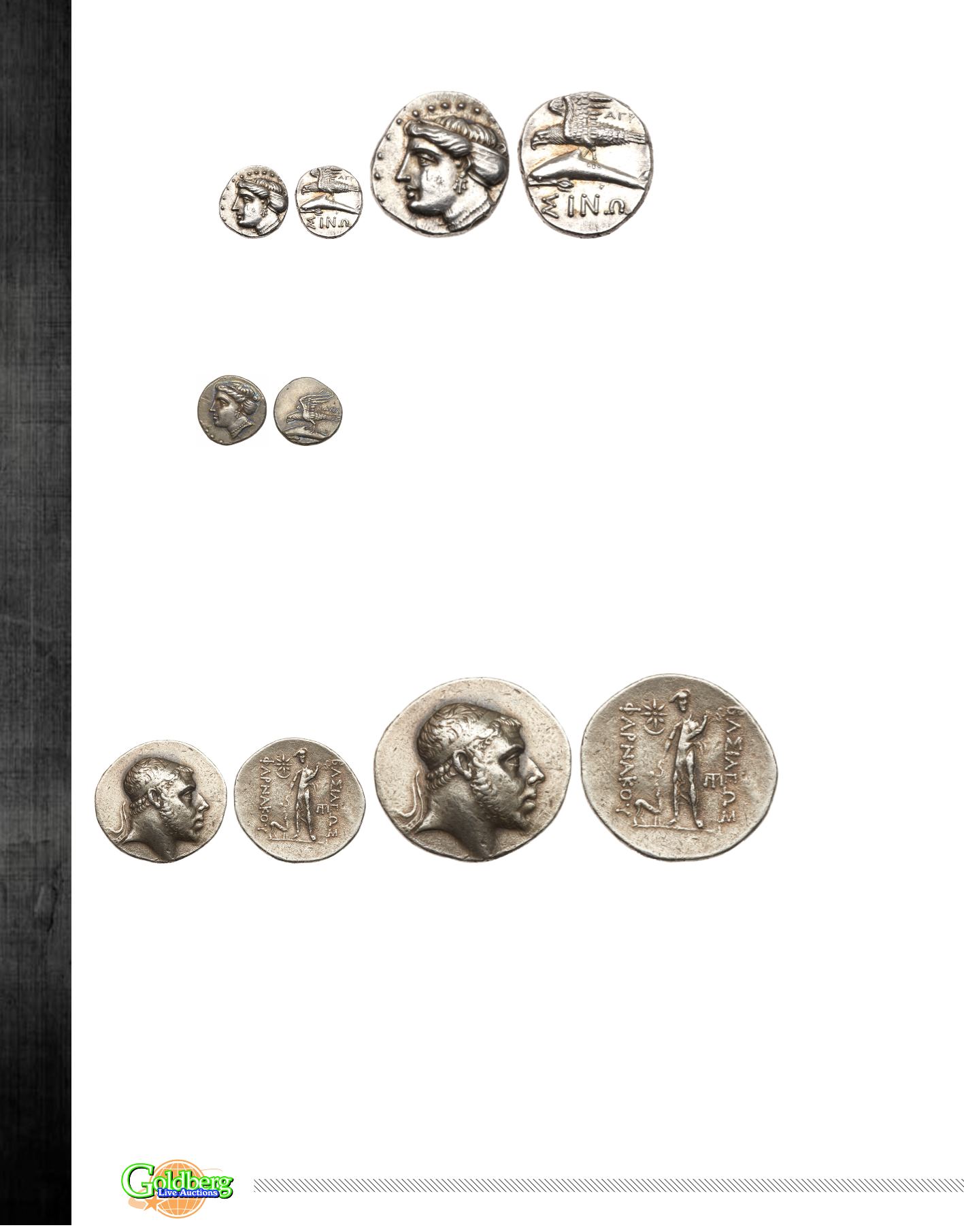

77
|
Session Five - Tuesday, February 14th 10:00am PST
Enlargement
1684 Paphlagonia, Sinope. Silver Drachm (5.01 g), ca. 330-300 BC
. Agreos, magistrate. Head of nymph left, hair bound in sakkos.
Reverse:
, sea-eagle left on back of dolphin left; below eagle' s ing, magistrate' s name:
[
]. SNG BM 1481; SNG Stancomb 770. Lustrous sur-
faces.
Superb Extremely Fine
.
Estimate Value .............................................................................................................................................................................$500 - 600
From The Herbert & Aphrodite Rubin Collection; Purchased privately from NFA in the 1980s, with their ticket.
1685
Paphlagonia, Sinope. Silver Drachm (4.93 g), ca. 330-
300 BC
. Kallias, magistrate. Head of nymph left, hair bound in
sakkos.
Reverse:
[
], sea-eagle left on back of dolphin left;
below eagle' s ing, magistrate' s name:
[
]. SNG BM
1488; SNG Stancomb 775. Lovely old cabinet toning.
Extremely Fine
.
Estimate Value ......................................................$300 - 350
The Hanbery Collection; Purchased privately from Numismatic
Fine Arts, E. Gans.
F
AMOUS
P
HARNAKES
I S
ILVER
T
ETRADRACHM
,
CA
. 185-170 BC
Enlargement
1686 Pontic Kingdom. Pharnakes I. Silver Tetradrachm (16.89 g), 185-170 BC
. Sinope. Diademed head of Pharnakes I right.
Reverse:
, Pantheistic male deity (Ma?) standing facing, holding cornucopiae, caduceus and branch with which he feeds fawn
standing right; above, thunderbolt; in inner left field, star within crescent; in inner right field, monogram. Cf. Kraay-Hirmer 770; cf. SNG BM 1025;
RG 4.
Very Rare.
Boldly struck in very high relief. Wonderful Hellenistic portrait! Scattered marks about the planchet.
About Very Fine
.
Estimate Value ........................................................................................................................................................................... $5,000 - UP
The Hanbery Collection; Purchased privately from CNG in 1992.
The somewhat unflattering depiction of Pharnakes I on the obverse of this coin is often cited as an example of Hellenistic verism. The king' s harsh
features are left unvarnished by idealism usually applied to Hellenistic royal portraits, no doubt to emphasize Pharnakes' strength as ruler of Pon-
tos - a backwater kingdom often beset by internal and external troubles. In the past, scholars have read a barbarous and thug-like character into
Pharnakes' portrait under the influence of colonial and racial stereotypes that are now condemned by modern scholarship. It is worth bearing in
mind that some of the most attractive portraits of the kings who followed Alexander the Great actually depict men who were themselves quite
accomplished killers.The reverse depicts the Phrygian lunar deity, Mên, who presided over the progression of (lunar) months. During his reign,
Pharnakes I constructed a temple dedicated to Mên and to his Greek consort Selene, the personification of the moon itself, near the Pontic city of
Komana. It has been suggested that the new sanctuary was built in order to compete with the important temple of Ma in the neighboring Cappa-
docian kingdom. In any case, Pharnakes' close interest in the cult led to the description of the deity in his new temple as Mên Pharnakou - "the
Mên of Pharnakes."



















